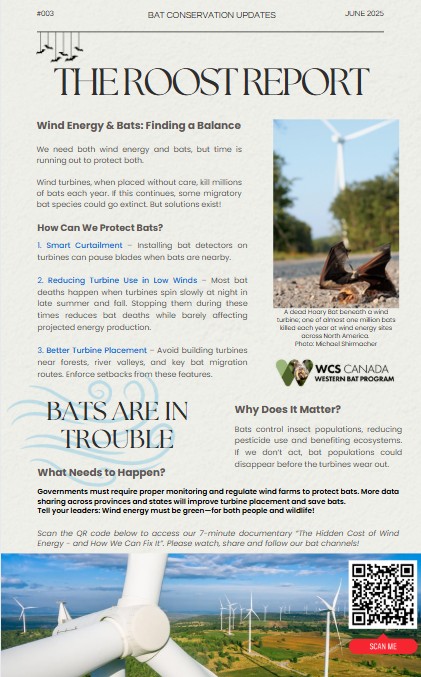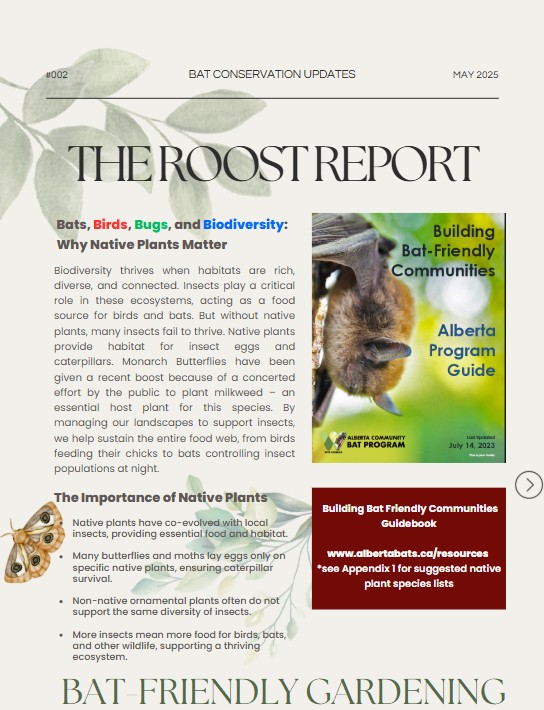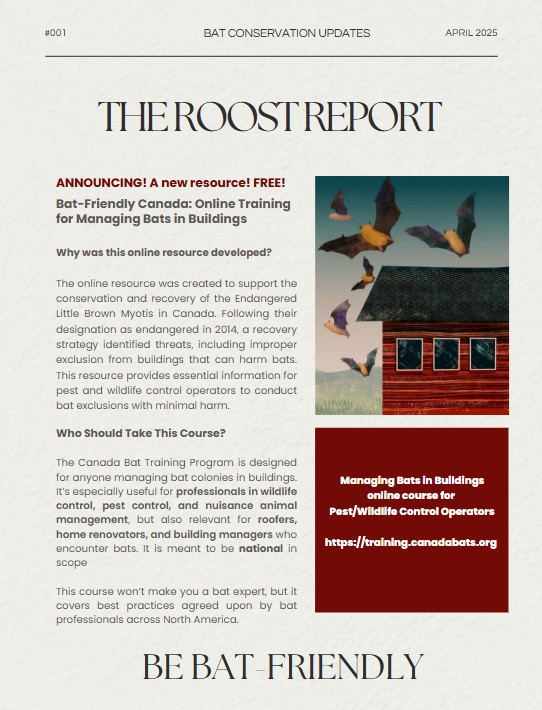
Wind Turbines (The Roost Report #003)
In our third edition of The Roost Report, we discuss wind turbines, the threat they pose to bats, and ways we can address this important conservation

Bats are vital to Alberta’s biodiversity and play a key role in sustaining our ecosystems and economy. We are working with communities across Alberta to improve the management and public perception of bats in the province.
Free guides, brochures, activity booklets, posters and more
Answers to common questions about bats
Information to help homeowners
Learn about what to do if you find a bat around your home
Information on building your own bat house
Contribute data to help bat conservation
Information on how to enhance habitat on farms
Profiles of Alberta Bats
Canada Bat Network Newsletters
Learn about how wind turbines affect bats
Learn about our program
Still need help? We have different ways of reaching us
Visit WCS Canada's BatCaver website
Visit WCS Canada's Western Bat Program website
Donate to support our bat conservation work

In our third edition of The Roost Report, we discuss wind turbines, the threat they pose to bats, and ways we can address this important conservation

In our second edition of the The Roost Report, we discuss bat-friendly gardening as a way of supporting biodiversity in our communities. Roost Report 002

Stay in the loop with what’s happening at the Alberta Community Bat Program and with bat conservation efforts across Alberta! The Roost Report is your
Stay informed. Follow us on Social Media
Join the discussion on our Alberta Bats Facebook group